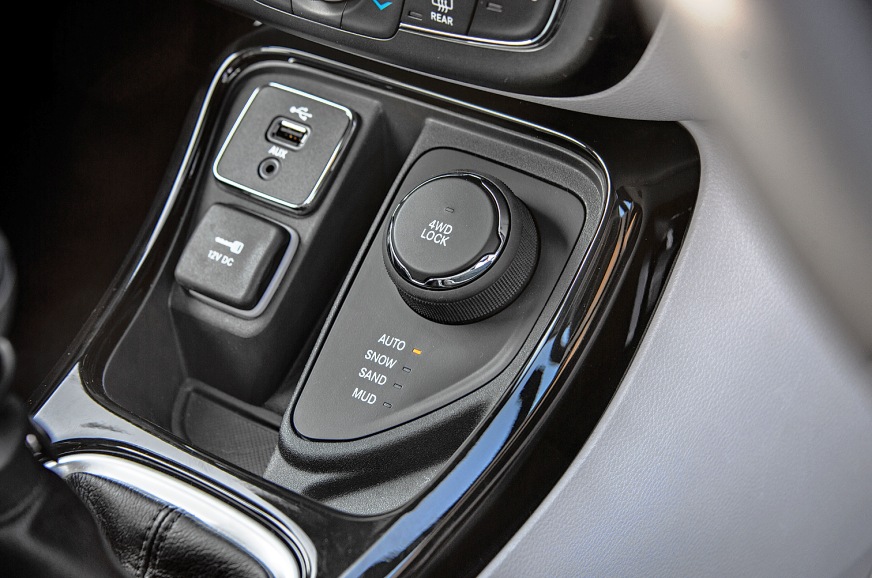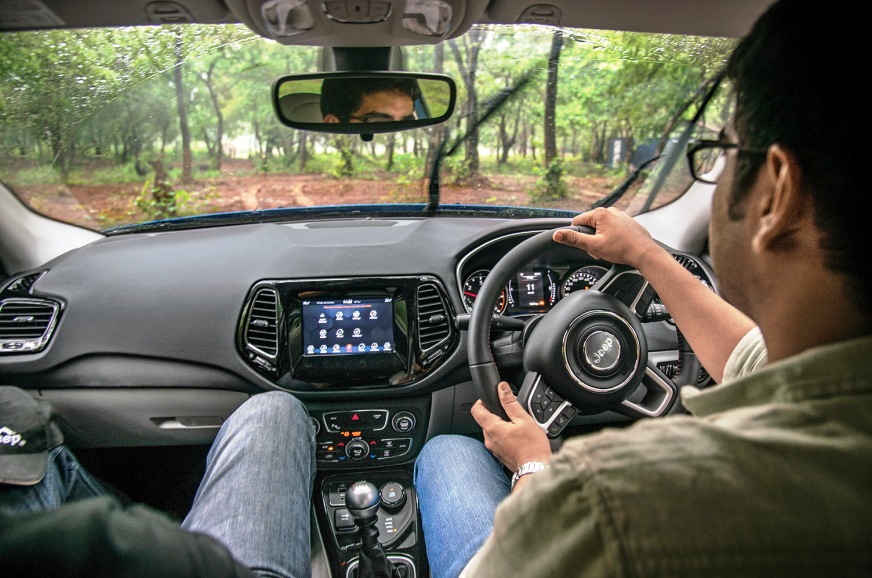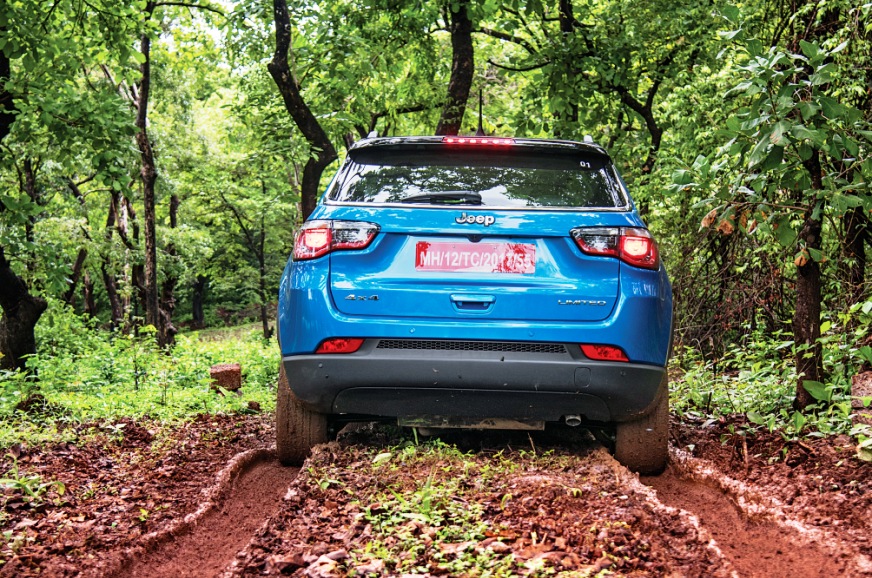Just as Marutis are expected to be fuel efficient, Jeeps are expected to be at home off road. When you have the legendary Willys of the 1940s – you know the all-terrain-conquering unsung hero of World War II – in your bloodline, you had better be good in the rough. To drive home the point that its new Compass is a proper Jeep, the SUV maker has brought us to the green confines of the Netravali wildlife sanctuary in Goa.
A couple of disclaimers first. We aren’t exactly let loose in the jungle to make our own path (perhaps in the fear of us getting lost/stuck and the potential environmental damage) but are taken on a guided tour of a track laid out by Jeep. Also, there are no petrols, autos or 4x2 versions of the Jeep on call. The ones we are driving are the 170hp, 2.0 diesel versions with six-speed manual transmissions and crucially, all-wheel drive.
By default, the Compass’ Active Drive 4x4 system sends engine power to the front axle only, in the interests of efficiency. But when added traction is needed, appropriate power is sent to the rear and, impressively, 100 percent torque can be made available to any one of the four driven wheels should the conditions require. India doesn’t get the hardcore Compass Trailhawk model that additionally features a low range, but Jeep’s Selec-Terrain traction management system is part of the kit here. The four-mode system adjusts torque split, traction control and related electronics for max traction in prescribed conditions. On offer are Auto, Snow, Sand and Mud modes, with the latter three being full-time 4x4 modes.
Mud mode selected, it’s show time. We cross a shallow stream to enter the course and the first test is a climb up a rutted path. It doesn’t seem as steep as it looked just moments before; the engine’s 350Nm of torque seems more than sufficient to pull the 1,700-odd kilogramme Compass up. It’s on the descent that things get tricky. Hidden under a canopy of trees, the surface is really slushy from the previous day’s rains and it seems steeper than the climb up. The lack of hill descent control is felt (only the automatics will get it) but a few dabs on the brake pedal and progress down becomes slow and steady. As we make our way from one waypoint to the next, the Compass goes up, down and all the way around a hill. A few things stand out. One, the Compass is rigid. There’s not a creak to be heard from the body even on the most challenging sections. Two, traction is really good. The all-wheel-drive system, long travel suspension (independent all around) and all-season Firestone tyres join forces to find grip where there is seemingly little of it. Three, the Compass’ 208mm ground clearance (unladen), 16.8 degree approach angle (counted from the low slung but flexible air dam, mind you), 22.9 degree ramp breakover angle and 31.7 degree departure angle give it a genuine agility in these unyielding surroundings.
Next on the menu is a larger river crossing. It looks intimidating but, you guessed it, the Compass sails on to solid ground on the other side; there’s no drama here. It helps to have the ability to wade through 330mm of water. We make it to the end after crossing over wooden logs and a pit full of slippery rocks but the Compass just crawls along.
At the end of it all, I’m left scratching my head, “Was the course easy or did the Compass just make light work of it?” What I do know for sure is that the Compass 4x4 is able enough to satisfy the adventurer in you. It’s so good, it makes the other soft-roaders in its class look really soft.



